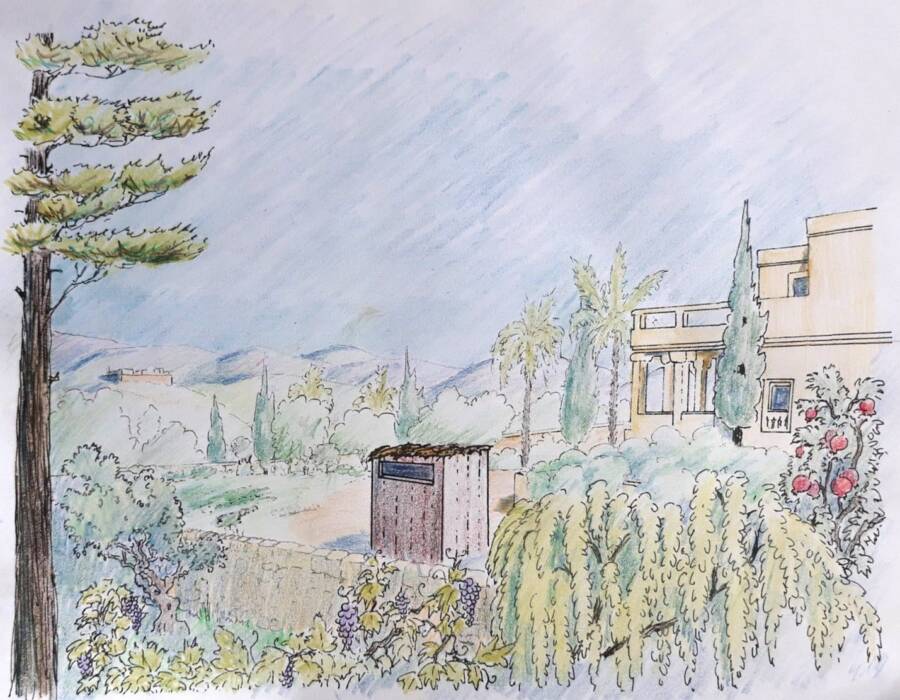Researchers found trace remains of roundworm, tapeworm, whipworm, and pinworm in the cesspit beneath the toilet.

Yoli Schwartz/Israel Antiquities AuthorityThe burgeoning field of archaeoparasitology seeks to use microscopic remains to understand ancient diseases.
The need to go is as old as time. And the study of an ultra-luxury toilet in ancient Jerusalem has revealed volumes about the intestinal troubles facing elites in Biblical times.
In a study published in the International Journal of Paleopathology, researchers found evidence of numerous intestinal parasite eggs in a 2,700-year-old toilet at the Armon Hanatziv Promenade in Jerusalem. Sediment samples revealed roundworm, tapeworm, whipworm, and pinworm eggs.
“Intestinal worms are parasites that cause symptoms like abdominal pain, nausea, diarrhea, and itching,” explained Dafna Langgut of Tel Aviv University, who led the study.
“Some of them are especially dangerous for children and can lead to malnutrition, developmental delays, nervous system damage, and, in extreme cases, even death.”
Pinworm in particular, researchers noted, can cause “intense anal itching.”
Though the site where the toilet was found is quite luxurious — with a sweeping view of the City of David and the Temple Mount — researchers say that the toilet provides strong evidence that even the elite suffered from rampant parasitic infections. Lacking modern medicine, they likely suffered from them all their lives.
Like even the poorest of ancient people, they may have contracted the parasites due to poor sanitary conditions which led to fecal contamination of food and water, the lack of widespread handwashing, the use of human feces to fertilize crops, or by consuming undercooked meat.

Yaakov BilligAnother angle of the toilet, which was discovered on the grounds of a once luxurious estate.
Langgut, who is developing a new field of research called archaeoparasitology to understand ancient parasitic infections and diseases, made the find by studying the sediment under the toilet. After collecting sediment samples, she chemically extracted the eggs and studied them under a light microscope.
“The findings of this study are among the earliest observed in Israel to date,” she explained. “These are durable eggs, and under the special conditions provided by the cesspit, they survived for nearly 2,700 years.”
The toilet itself was first discovered last year, as archeologists examined the seventh-century Armon Hanatziv site. Alongside the “magnificent stone artifacts of extraordinary workmanship” and a “spectacular garden” with “fruit and ornamental trees” archeologists also found a “square limestone installation with a hole in its center.”

Yaniv KormanA sketch of what the garden — and toilet— may have looked like 2,000 years ago.
Though some doubted its intended use, Israel Antiquities Archeologist (IAA) Yakov Billig, who directed the excavation, knew exactly what he was looking at.
“I was in the field and saw it and realized what it was on the spot,” he said.
Researchers note that the existence of a toilet in the garden — rare in ancient Jerusalem — underlined the wealth of its former owner.
“Toilet facilities were extremely rare at that time and were a status symbol – a luxury facility that only the rich and high-ranking could afford,” said Langgut and Billig in a statement.
“As the Talmud teaches, ‘Who is wealthy? … Rabbi Yosef says: Anyone who has a bathroom close to his table.'” (Bavli Shabbat 25: 2).”
But even more fascinating than the toilet itself are the parasitic eggs it contains. “Studies like this one help us document the history of infectious diseases in our area,” explained Langgut, “and provide us with a window into the lives of people in ancient times.”
To Eli Escozido, director of the IAA, finds like these — however small — shed valuable light on how people lived in ancient times. The new research, he raved, “manages to touch on the finest details of everyday life in antiquity.”
And Langgut is hopeful to extract even more insights about life in seventh-century Jerusalem from the garden toilet. Having identified the parasitic remains in the cesspit, she hopes to further analyze the sediment to learn about how people ate and what sort of medicinal herbs they may have used.
To some, a toilet may be just a toilet. But to archeologists like Langgut, they’re a veritable treasure chest of historical information.
After reading about the 2,700-year-old toilet and the parasitic infections suffered by its owners, learn about the parasitic worm that climbed up a man’s penis and nearly killed him. Or, discover the skin-crawling story of the parasitic botfly that can burst through human skin.





